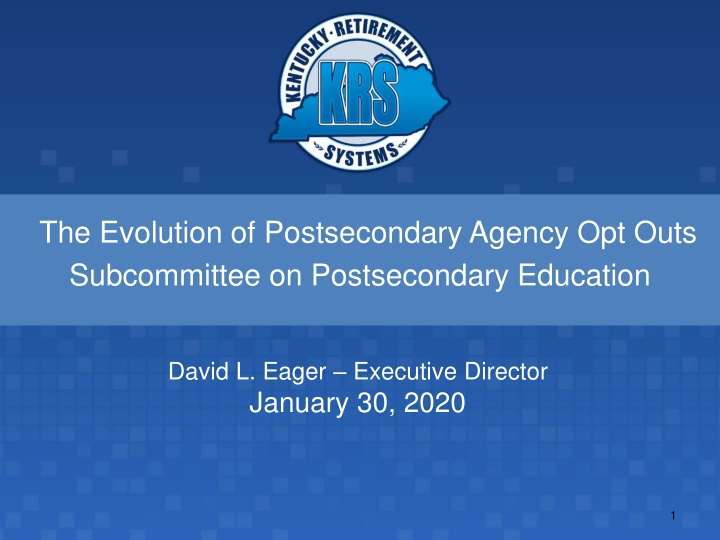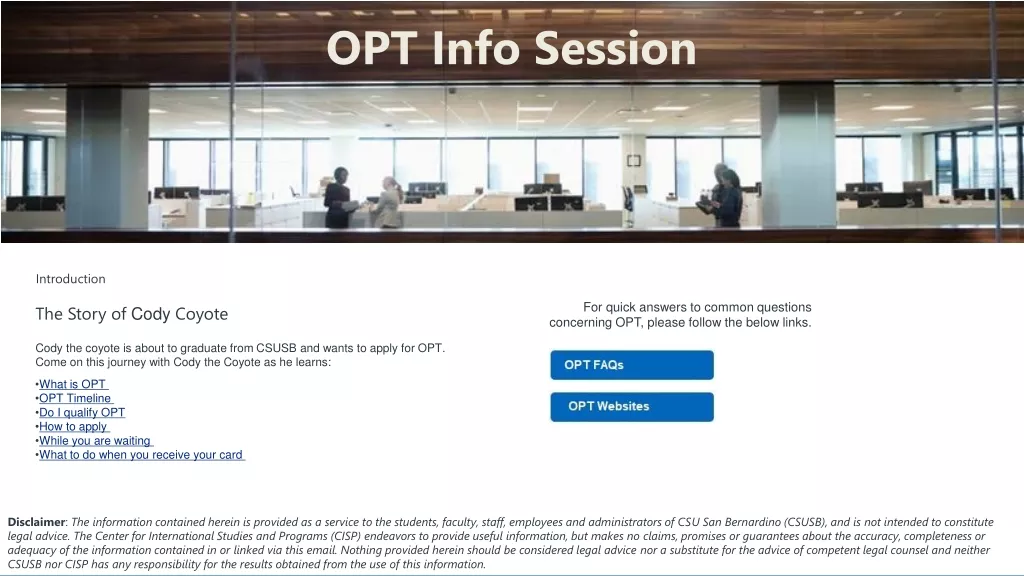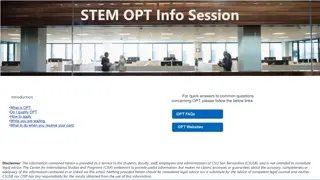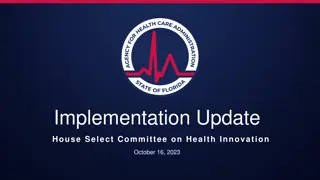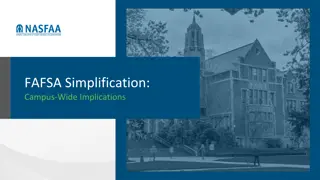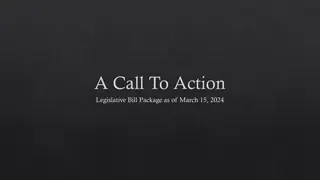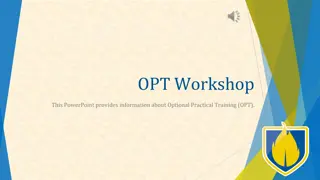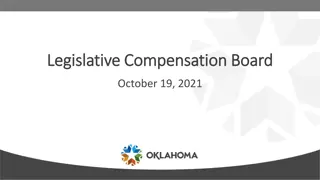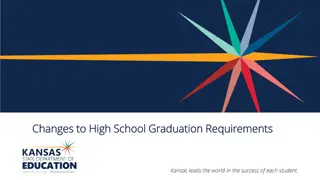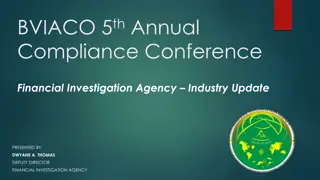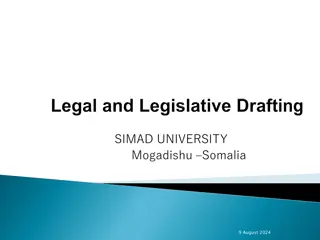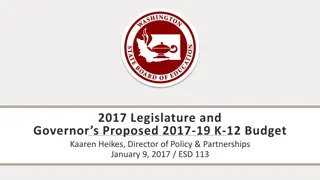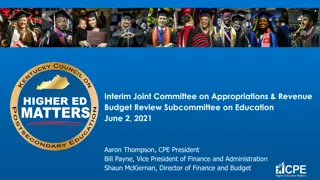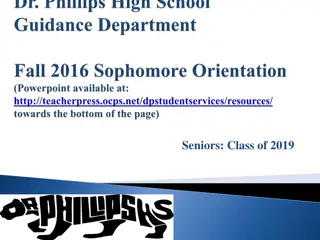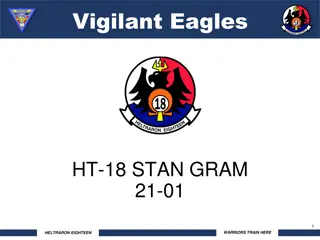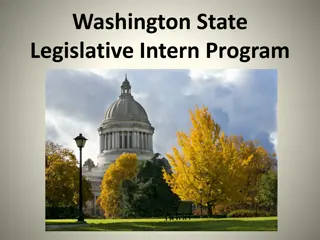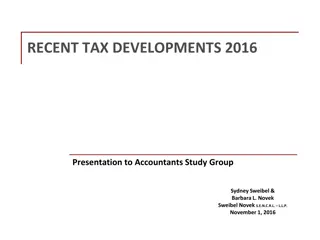The Evolution of Postsecondary Agency Opt-Outs: Recent Legislative Changes
Explore the legislative changes surrounding postsecondary agency opt-outs, from allowing certain agencies to exit the system with different payment options to addressing the quasi conundrum in the 2019 GA special session. Discover the challenges faced and the various options available for these agencies.
Download Presentation

Please find below an Image/Link to download the presentation.
The content on the website is provided AS IS for your information and personal use only. It may not be sold, licensed, or shared on other websites without obtaining consent from the author.If you encounter any issues during the download, it is possible that the publisher has removed the file from their server.
You are allowed to download the files provided on this website for personal or commercial use, subject to the condition that they are used lawfully. All files are the property of their respective owners.
The content on the website is provided AS IS for your information and personal use only. It may not be sold, licensed, or shared on other websites without obtaining consent from the author.
E N D
Presentation Transcript
The Evolution of Postsecondary Agency Opt Outs Subcommittee on Postsecondary Education David L. Eager Executive Director January 30, 2020 1
61.522 Allowed certain KERS and CERS agencies to exit the system But did not include postsecondary agencies Determined the exit liability using the interest assumption Offered a lump sum or a 20 year installment option 2
HB 351 in the 2017 GA Eliminated the installment option Set the interest discount rate at lesser of: Assumed rate of return or the 30 year Treasury yield with a floor Still did not include postsecondary agencies 3
HB 358 in the 2019 GA Allowed quasi agencies to opt out of KERS Non-Haz Included postsecondary agencies Lump sum or installment payment options Froze the contribution at 49.47% for one year for the quasi agencies Was vetoed 4
HB 1 2019 Special Session Tries again to address the quasi conundrum Can t afford increase in contribution from 49.47% to 93.01% in FY 2021 Can t afford a lump sum exit under HB 351 State can t afford to subsidize the difference between 49.47% and 93.01% 5
HB 1 2019 Special Session Quasi agencies can: 1) Stay in and pay the full contribution rate, or 2) Select one of four exit options 6
HB 1 2019 Special Session Four options: 1) Hard freeze / lump sum - 4.5% Limited risk to KRS 2) Soft freeze / Lump sum - 3.5% Experience risk to KRS 3) Hard freeze / installments - 3.5% Credit risk to KRS 4) Soft freeze / installments - 3.0% Credit and experience risk to KRS 7
HB 1 2019 Special Session Full Actuarial Cessation Costs ($MIL)* Option 1 H.F/L.S Option 2 S.F./L.S Option 3 H.F./I Option 4 S.F./I EKU $195.8 $276.8 $226.8 $301.7 Morehead $99.6 $134.6 $115.6 $145.8 Murray $108.3 $150.2 $125.3 $162.0 NKU $167.4 $252.7 $193.6 $276.6 $1,357.5 WKU $145.0 $200.5 $167.5 $216.8 KY Higher Ed $63.2 $98.9 $74.0 $108.6 KSU $35.8 $44.6 $40.9 $47.9 KCTCS $116.1 $199.1 $136.0 $220.6 Total $931.0 $1,079.8 $1,479.9 *Based on June 30, 2018 valuation. Final calculation will undoubtedly be higher 8
HB 1 2019 Special Session Three of the options allow agencies to opt out at a lower cost than with HB 351 PV of Cost Relief vs. Current HB 351 Provisions ($MIL) Option 1 H.F/L.S Option 2 S.F./L.S Option 3 H.F./I (1) Option 4 S.F./I (2) Postsecondary Agencies $223 $123 $129 --0-- (1) Maximum payout 30 years. State pays the remaining balance (2) Year one contribution set so as the agency pays off in 30 years All Other Quasi Agencies $455 $247 $483 --0-- Total $678 $370 $612 --0-- 9
HB 1 2019 Special Session Option 3 H.F./I Option 4 S.F./I Initial % Paid Off(1) Initial % of Pay(2) Short Fall $MIL Annual Cont. $MIL EKU 97% $7.285 68.2% $17.0 Morehead 67% $38.060 93.4% $8.2 Murray 96% $5.610 67.3% $9.1 NKU 100% ------ 49.5% $18.3 WKU 100% $.481 58.3% $12.2 KY Student Loan 100% ------ 49.5% $6.5 KSU 91% $3.617 63.5% $2.7 (1) Maximum payout 30 years. State pays the remaining balance (2) Year one contribution set so as the agency pays off in 30 years KCTCS 100% ----- 50.8% $12.5 Total 95% $55.054 61.1% $86.6 10
HB 1 2019 Special Session Conclusions Postsecondary agencies have four new options to exit KRS Could cost KRS up to $223MIL P.V. vs. existing statutes ($678MIL for all 113 quasi agencies) Only 1 (Morehead) has a soft freeze installment rate above 93.01% (93.36%) Three have a less than 51% soft freeze installment rate But many say they still can t afford to stay or leave Percent of pay funding will continue to exacerbate the problem 11
